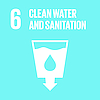The global sustainable water supply is estimated to be 4,200 km3 per year. In 2000, global water use stood at 3,950 km3. For 2030, global water demand is projected to be 6,900 km3, exceeding the sustainable supply by 40 per cent. Under a business as usual scenario, the Organisation for Economic Co-operation and Development (OECD) forecasts that global water demand for manufacturing industries will increase by 400 per cent from 2000 to 2050.
To achieve Inclusive and Sustainable Industrial Development (ISID), water use efficiency has to drastically increase. In other words, water consumption as well as water pollution per unit of industrial output both must be significantly reduced. This requires collaborative efforts by all water users, and it means that industries have a chance to play a catalytic role.
Stewardship means the responsible planning and management of resources. Water stewardship is defined as using water in a way that is socially equitable, environmentally sustainable and economically beneficial. This is achieved through a stakeholder inclusive process that involves site and catchment based actions. Good water stewards understand their own water use, catchment context and shared risk in terms of water governance, water balance, water quality and important water related areas. With this understanding, water stewards engage in meaningful individual and collective actions that benefit people and nature.
| Contribution to the Sustainable Development Goals | |||
|---|---|---|---|
 |  | ||